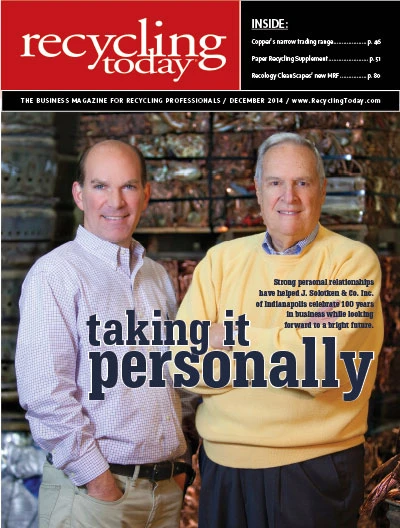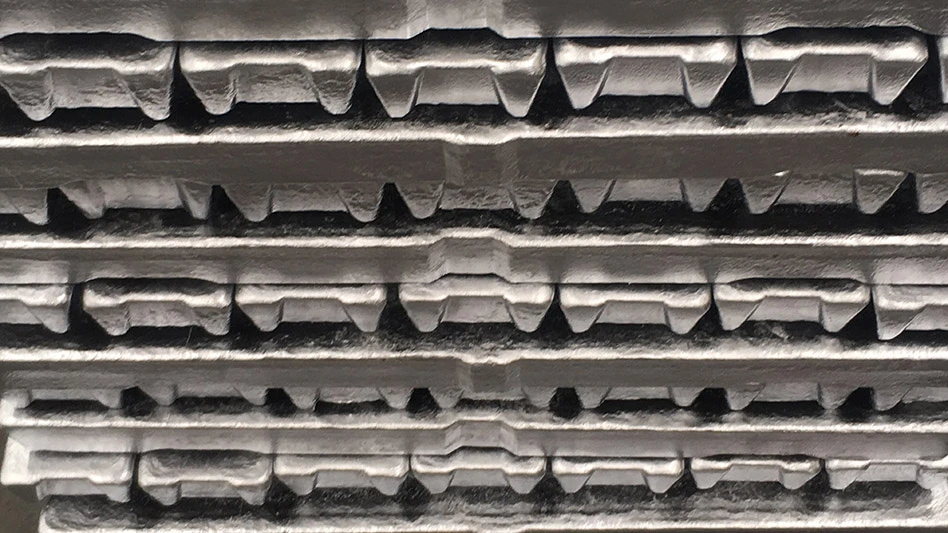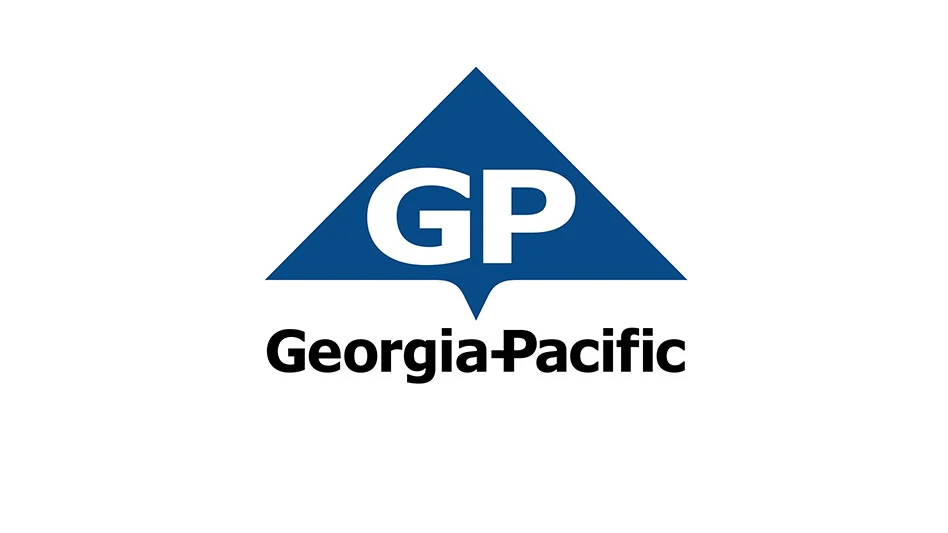 The modest increase in the general economy and manufacturing have hardly helped copper scrap markets, though some special circumstances, such as the move to low-lead brass (See the sidebar, “Going Lead Free,” below), are having a small effect on copper scrap demand. Copper scrap seems stuck in a narrow trading band of approximately $3 per pound, and, most observers agree that it could be there well into 2015.
The modest increase in the general economy and manufacturing have hardly helped copper scrap markets, though some special circumstances, such as the move to low-lead brass (See the sidebar, “Going Lead Free,” below), are having a small effect on copper scrap demand. Copper scrap seems stuck in a narrow trading band of approximately $3 per pound, and, most observers agree that it could be there well into 2015.
“Flow is just not normal,” says Todd Safran, vice president and chief operating officer of Safran Metals, Chicago. “You can’t count on any day being normal for this time of year. Scrap is coming in slow. On the sell side, orders are taking longer to get picked up.”
No two days are the same at the yard, he continues. “We’d like to see it a bit more consistent,” Safran says. “Not a lot is coming in, and the mills are not knocking down our doors. Mills seem to have their bellies full as they approach the end of the year. They don’t want inventory on hand and are not taking any more than they need. They are just sticking to the orders they have in hand.”
While material flow in the heartland has been erratic, overall reason for optimism exists.
“Year-on-year demand is steady to up,” says Mark Weintraub, a trader with Premier Metal Services, Solon, Ohio. “That said, over the past few months, supply has been stronger.”
Defying supply & demand
Copper, like many other metals, is in a position that seems to defy the traditional rules of supply and demand. If the general economy has a hiccup, investment money moves from equities into the copper futures market. If the stock market appears to be bullish, money moves out of the copper futures market and back to stocks. The change has very little to do with physical supply and demand on the ground; scrap dealers simply get to react to the prices.
“The terminal market is still driven by the financial markets,” Weintraub says. “Users of the physical material are always in a position to respond to what nonusers in the investment community are doing.”
While copper scrap was trading for $3.20 per pound in August, by October it had slipped by 10 percent, and COMEX high-grade copper was floating around $3 per pound. Of course, one can put the pointer anywhere for price comparisons on metals. If you were to choose this past March as the baseline, when copper was roughly $2.93 per pound, today’s price looks good. Go back to last Christmas, when copper was trading at $3.35 per pound, and maybe Santa has forgotten about copper scrap traders this year.
 Last winter, Weintraub notes, the weather slowed things down considerably and metal flow did not loosen up until summer. In most areas, a more normal situation has returned.
Last winter, Weintraub notes, the weather slowed things down considerably and metal flow did not loosen up until summer. In most areas, a more normal situation has returned.
“We’ve been pleased with flows,” says Brady Bird, president of S.I.C. Recycling, Riverton, Illinois. In S.I.C. Recycling’s area, new construction drives most of the consumption. “The U.S. market is stabilizing and improving,” Bird says.
That shows up in longer-term planning for scrap buyers. Buyers seem more likely to project out over 30 days. “There is more confidence,” Weintraub says. “They are at least looking past the next couple of weeks. The copper business is steady enough and even up a bit. Manufacturers seem more confident,” he adds.
The wild card
China remains a wild card. What will the Chinese do after the Lunar New Year?
“If China comes back hungry for metal, margins will narrow,” Weintraub says. “If China is hungry, copper will go up. If China coughs, it will go down.”
|
Going lead free Government requirements to eliminate lead in brass mean ingot manufacturers have to consume more copper as they shift to low-lead brass. Plumbing fixtures makers primarily will feel the ramifications of this major transformation. However, lighting fixtures and other traditionally brass-heavy products are likely to find their lead use limited as well. Known as “The Reduction of Lead in Drinking Water Act,” the legislation, passed three years ago as SB 3874 and signed by President Obama, amended the Safe Drinking Water Act to reduce the allowable lead content in brass products from 8 percent to 0.25 percent on a weighted average. The new law took effect in January of this year. Manufacturers say the no-lead alloy products cost 25 percent to 40 percent more to manufacture than traditional products. Commonly used brass alloys, such as ASTM B283 and UNSC37700, have lead content ranging from 1.5 percent to 2.5 percent. Companies that traditionally produced leaded brass likely will increase their copper consumption, sources say, as a result of the legislation. “They can’t use the traditional melt mix, so they will have to use more copper,” Mark Weintraub of Premier Metal Services, Solon, Ohio, says. “That drains more copper from the scrap supply.” Coming into October, Todd Safran of Safran Metals, Chicago, says he noticed a slowdown in the market for yellow brasses, which he says was a change from the rest of the year. Demand for honey brass, especially for overseas shipment, is off. Safran places some of the blame on China’s pulling back from expected purchases. “With the new regulations in place, it is not worth their while,” he says. “We are definitely seeing a slowdown in yellow brass. I wish there were more activity,” Safran adds. |
According to a Bloomberg article dated Oct. 23, 2014, copper futures rose after manufacturing in China expanded more quickly than projected in October. Copper futures for delivery in December increased 0.7 percent to reach $3.04 per pound on the COMEX after touching $3.049, which Bloomberg notes was the highest point reached since Oct. 15.
Although he does not sell directly to China, Bird says he feels the country’s impact on the market, saying “China is driving the market.”
In the meantime, the Chinese market is evolving. “China is going through a maturation process. Their level of growth is shifting downward, although it remains strong,” Weintraub says. In short, the market is healthy, but the percentage growth figures are smaller.
China also is maturing in terms of generation and recovery of its own scrap. That definitely will have an impact on exports from the United States.
On top of the concerns related to China’s demand for copper scrap, China’s Operation Green Fence policy means Chinese customs officials are looking to meet specific quality requirements for copper (and other scrap) shipments entering the country. (Operation Green Fence was an initiative by the Chinese central government’s environmental officials and customs inspectors to be more exacting with inspections of container loads of scrap.)
“There will be a paradigm shift. Scrap suppliers will have to meet specific requirements,” Weintraub says. “They will have to catch up to the specifications from China.”
As long ago as 1996, the Chinese central government introduced regulations regarding secondary commodity shipments entering the country. These regulations were updated in 2007 and again in 2009 before the central government’s 2013 initiative. China trained more than 2,000 inspectors to look at scrap shipments.
For the suppliers who do meet the Chinese requirements, Weintraub says he expects steady demand and, perhaps, a bit more pickup than would be seen from other Far East countries.
Looking ahead
Overall, recyclers have reason to be somewhat optimistic about copper scrap. The general economy is OK. Automotive and construction continue to do modestly well. China is still in the game.
Bird says he sees little change from the status quo and expects copper scrap prices to continue sideways. “There is not much market direction,” he says.
Safran Metals is hoping to see more copper scrap come in. Right now, Safran says he suspects that people are sitting on some material.
“Prices around $3.20 are better. With things around $3, there is not as much excitement, and people tend to sit on inventory,” he says.
However, for the near future, Safran’s analysis is in line with Bird’s: The market is moving in a sideways pattern and will continue that way in a tight range until something happens to cause it to break out.
“Business could be better, but it could be a lot worse,” Safran says. “I think we’ll see the market stay sideways until the market decides what it wants to do. But I’ll take sideways over down any day of the week,” he adds.
The author is a Cleveland-based contributing editor to Recycling Today. He can be contacted at curt@curtharler.com.

Explore the December 2014 Issue
Check out more from this issue and find your next story to read.
Latest from Recycling Today
- OnePlanet Solar Recycling closes $7M seed financing round
- AMCS launches AMCS Platform Spring 2025 update
- Cyclic Materials to build rare earth recycling facility in Mesa, Arizona
- Ecobat’s Seculene product earns recognition for flame-retardant properties
- IWS’ newest MRF is part of its broader strategy to modernize waste management infrastructure
- PCA reports profitable Q1
- British Steel mill subject of UK government intervention
- NRC seeks speakers for October event





